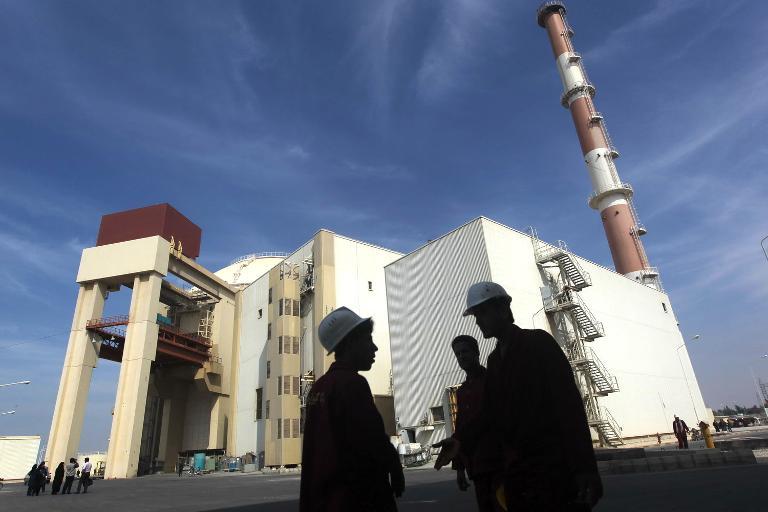
The move is part of seven new steps agreed between Iran and the International Atomic Energy Agency to increase transparency over Tehran's controversial nuclear drive.
And it appears to be the first time in years Iran has agreed to tackle IAEA suspicions that its nuclear work prior to 2003 had "possible military dimensions".
The development comes with Iran set to resume nuclear talks with world powers later this month, after an initial accord in November imposed curbs on its uranium enrichment to allay concerns that it seeks to acquire atomic weapons.
Capping two-days of talks in Tehran with Iranian officials, the IAEA said Iran agreed to provide "information and explanations for the agency to assess Iran's stated need or application for the development of Exploding Bridge Wire (EBW) detonators".
According to the IAEA, Iran told the agency in 2008 that it had developed EBWs for "civilian and conventional military applications" but has yet to explain its "need or application for such detonators".
Such fast, high-precision detonators could be used in some civilian applications but are mostly known for triggering a nuclear chain reaction. The IAEA believes they form "an integral part of a programme to develop an implosion type nuclear device."
Mark Hibbs, senior associate at the Carnegie Endowment for International Peace, said the detonators are "fine wires... designed to perform with exceeding precision and reliability. Without that dependability, the detonations would fail."
Citing an unnamed Iranian nuclear official, the ISNA news agency said Tehran would "provide information beyond what it had already provided to the agency" on the EBWs.
It did not elaborate.
Earlier, Iran's envoy to the Vienna-based IAEA, Reza Najafi, said "seven more practical steps" had been agreed between the two sides in a deal that would be implemented by May 15.
Six other steps were agreed under a framework deal struck on November 11.
In the latest agreement, the IAEA will also have "managed access" to the Saghand uranium mine and the Ardakan yellowcake facility where an impure form of uranium oxide is prepared to be fed into centrifuges for enrichment.
Officially unveiled in April 2013, the plant in Ardakan receives raw material from Saghand, some 120 kilometres away. It can reportedly produce up to 60 tonnes of yellowcake annually.
Iran also agreed to submit updated design information and finalise a safeguards mechanism for the so-called heavy water reactor under construction in Arak.
The reactor is of international concern because it could theoretically give Iran a second route to a nuclear bomb - an alternative to highly enriched uranium - through extraction of weapons-grade plutonium from spent fuel if it also builds a reprocessing facility.
IAEA director general Yukiya Amano is reportedly expected to brief the agency's board of governors on the details of the latest agreement.
Last month he raised expectations that alleged weaponisation studies would be broached in future talks with Iran, telling AFP the time was ripe to ask "more difficult" questions.
Najafi said the weekend talks with IAEA experts were "constructive" and focused on "the progress in implementation of practical steps" required of Iran in the November deal.
Iran's enrichment activities are in defiance of repeated UN Security Council demands and resolutions, amid suspicions in the West and Israel that Tehran's nuclear drive masks military objectives, a claim it has repeatedly denied.
A sore issue in long-running discussions with the IAEA has been the Parchin military site near Tehran, which the UN agency suspects was used for research on weapons development.
Iran argues that Parchin is not a nuclear-declared site and therefore not subject to inspection.
A visit to Parchin was not included in the new seven-step deal.
The IAEA says it needs to examine Parchin, pointing to new information received since its last visits in 2005.
Iran and six world powers are due to resume nuclear talks on February 18 on reaching a long-term nuclear deal.
Full cooperation with the IAEA is a key demand of the P5+1 - Britain, China, France, Russia and the United States plus Germany.
mod/srm
COMMENTS (1)
Comments are moderated and generally will be posted if they are on-topic and not abusive.
For more information, please see our Comments FAQ







1732354127-0/Untitled-design-(3)1732354127-0-270x192.webp)


1732344836-0/BeFunk_§_]__-(37)1732344836-0.jpg)






Can't wait to hear the explanation - get ready for a real whopper they have had years to fabricate a story.